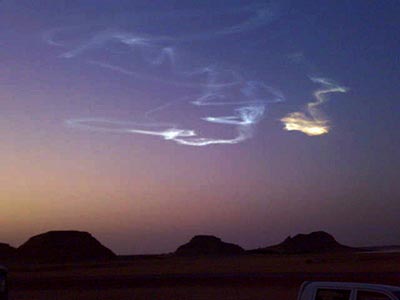Detecting diamonds in
Scientists have found the rest of the 2008 TC3 meteorite rushing into the atmosphere half a year ago. Scientists were surprised to find diamonds in them.
The persistent search of dozens of students in the Sudanese desert resulted in 4 kg of broken black stone from asteroid 2008 TC3. According to a study published in the journal Nature, these rocks are filled with particles of material like diamonds, a form of carbon formation.
'This diamond-containing mineral form has never been in our collections, it is a completely new mineral,' said Peter Jenniskens of NASA's Ames Research Center in California, USA.
Jenniskens said, for years, astronomers have been constantly sending robots to explore the planet, collecting specimens and sending them to analysis at earth's laboratories. But this time there was a falling meteorite and the researchers just went to the fall, took it back. This asteroid burns mostly in the atmosphere when about 37 km from the ground.

The 2008 TC3 meteorite caught fire in Sudan's sky in October 2008.Photo provided by Dr. Muawia H. Shaddad, University of Khartoum, Sudan.
On October 7, 2008, meteorite 2008 TC3 (with code 8TA9D69) with a diameter of 2 to 5 meters plunged into the atmosphere to ignite before hitting the earth's surface.
The penetration of this object with the earth is observed by experts through a telescope located atop Lemmon, north of Tucson, Arizona, USA, about a day before going to earth.
This meteorite is noticeable because it is the first celestial object to be observed and followed by humans before reaching the earth. The meteorite was confirmed to enter the atmosphere in northern Sudan at a rate of 12.8 km per second.
When plunging into the atmosphere, TC3 exploded at a height of 10 km with an energy equivalent to about 1,000 tons of TNT, creating a large fireball in the sky. At that time, scientists thought there would be no more pieces of rock left to conduct research.
Scientists say that the age of TC3 is about 4.5 billion years. It is very likely that this object is a waste of a process of unfinished planet. It, along with other celestial bodies, could not be assembled into an earth-like planet, so it was dispersed, moving indefinitely in the universe until it entered another body.
"This is a good model for studies of the early days of planetary processes," said Michael Zolensky, NASA's geological researcher, a co-author of the study.
- Discover 2 diamonds larger than 100 carats in South Africa
- Learn about diamonds and how to recognize real diamonds
- Artificial diamonds cut everything in nature
- Digging the largest second-largest diamond, extremely expensive
- Russia develops counterfeit diamond solution
- How to create pure diamonds like natural diamonds in 2 weeks
- Greatest discovery of 4 decades in the land of
- Diamonds 'transformations' are extremely toxic
- Discovering white diamonds
- Walking suddenly picked up the diamond in the park
- Diamond originated from sea salt?
- Find the world's largest 3 billion year old diamond
 Van Allen's belt and evidence that the Apollo 11 mission to the Moon was myth
Van Allen's belt and evidence that the Apollo 11 mission to the Moon was myth The levels of civilization in the universe (Kardashev scale)
The levels of civilization in the universe (Kardashev scale) Today Mars, the sun and the Earth are aligned
Today Mars, the sun and the Earth are aligned The Amazon owner announced a secret plan to build a space base for thousands of people
The Amazon owner announced a secret plan to build a space base for thousands of people